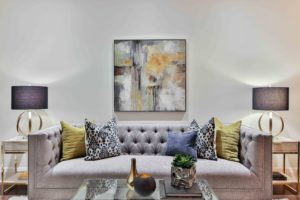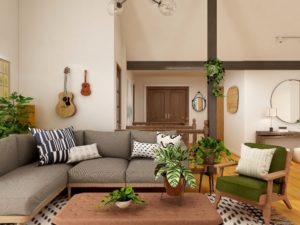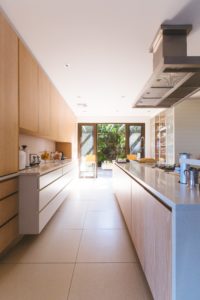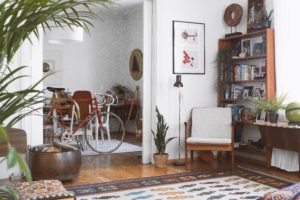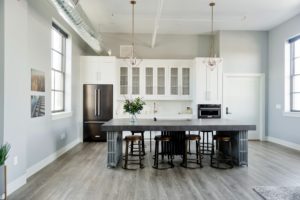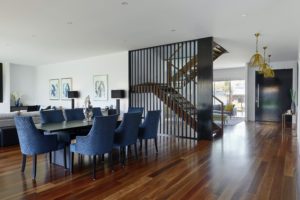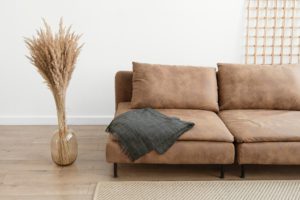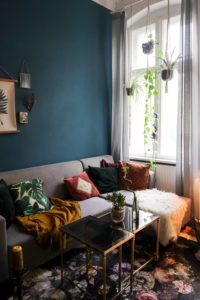The way you furnish and decorate your Denver home should be unique to your specific, personal tastes. Your home should reflect who you are, after all. However, your home should also be functional, comfortable, and inviting. These are the goals to aim for when choosing your furnishings and decorations. But that’s a lot easier said than done. To achieve these goals, begin by creating a cohesive interior design. The ability to do so depends on your knowledge of interior design and the various styles you can choose from. Here in Denver, there are many types of interior design styles that you could adopt for your home.
What Is Interior Design?
Interior design is sometimes misunderstood as a fancy way to decorate your home. Many people may dismiss the thought that they should carefully plan their interior design. They assume that they can make do with whatever furniture and decorative items they have. However, interior design is much more important than you think. Not only can a cohesive interior design that’s planned out from start to finish improve the overall aesthetic of your home, but it can also do the following:
- Improve each room’s function – The way that furniture and decor are arranged can make or break how the space is used.
- Improve the comfort of each room – The furniture you use, the colors you choose, and the decor you choose all affect how comfortable the room is to be in. If your living room is filled to the brink with seating options, it may be challenging to move around in and prevent the space from feeling comfortable.
- Improve your general mood – Your environment affects your mood, and how your interior design is implemented can contribute to your day-to-day feelings. For instance, if your bedroom feels cramped because it’s stuffed with furniture and the walls are over-decorated, it can create a claustrophobic feeling that defeats your ability to relax.
- Improve your ability to maintain your home – Properly arranged furniture and carefully considered decor make each room easier to maintain. Too much furniture and decor can make a room more manageable to clean and to keep clean.
Because of how vital interior design is, it’s crucial that you put time and effort into planning and implementing an interior design that works for you. It also helps to know what your options are. With that in mind, the following are eight different interior design styles that you can adopt for your home in Denver.
1. Traditional Style
Arguably the most common type of interior design is the traditional style. Traditional interior designs are heavily influenced by European interior design styles of the 18th and 19th centuries. Furniture and decor tend to have a timeless, classic quality, and the overall aesthetic emphasizes consistency and harmony. The following are some of the key elements found in traditional interior designs:
- Dark and warm colors – While neutral colors are still used primarily for a room’s walls, the furniture will typically have darker, warmer colors in a traditional design. Darker-colored woods are commonly used to provide a richer tone that’s more sophisticated, while bold colors, such as green, red, and brown, are used as accents.
- Ornate furniture – Traditional furniture is about as different from modern furniture as you can get. Traditional furniture is heavily influenced by old British and French decor and has a more regal and grand look. Traditional furniture is often ornate; for example, wood tables may have designs carved into the sides, and bathrooms may be outfitted with clawfoot tubs.
- Decorative accessories – Although traditional furniture choices are more ornate, consistency is still crucial, which is why the furniture in a room must match or, at the very least, complement one another. The risk in having a matching set of furniture is that such visual cohesion can sometimes look a little bland. In a traditional style, this is remedied through the use of decorative accessories, such as vases, candle holders, sculptures, framed mirrors, and more, all of which provide an aesthetic punch.
- Heavy fabrics – Fabrics are used to add softness to traditional designs, so heavy curtains are favored over any other window treatment type. Upholstered furniture is commonly used as well to add a touch of sophistication. To remain consistent with the elegant, classic look, luxurious fabric, such as velvet, leather, and silk, are used. Visual interest is added through the use of plaid or paisley patterns.
- Elaborate accents – Accents in the traditional style tend to be architectural and help introduce a visual flourish to the space. These accents typically stand out since the wall colors are generally kept neutral. Some examples of architectural accents in a traditional style include beveled wood paneling, elaborate floor patterns, and luxurious moldings.
2. Farmhouse Style
A farmhouse interior design uses natural elements to create a style that’s a little rough around the edges, but that creates an atmosphere of coziness and comfort. The farmhouse style is very similar to mountain style and rustic style interior designs. Furniture tends to be sturdy and functional instead of decorative. For instance, farmhouse tables use thick wooden legs and surfaces. Essentially, furnishing in a farmhouse style emphasizes practicality. The following are a few elements that are commonly used in a rustic farmhouse style:
- Repurposed wood – Repurposed wood provides the worn look that often characterizes the farmhouse style. The use of furniture built with repurposed wood contributes a lot of character since repurposed wood generally has a unique look that might be considered visual flaws in other types of interior designs. Unfinished wood provides the same kind of character.
- Wicker and rattan furniture – Wicker and rattan furniture complement the use of repurposed wood by providing a similar, natural look. This furniture style also offers more texture and can add a visual flourish to your rustic farmhouse style without overwhelming it.
- Butcherblock countertops – Wood countertops help maintain that natural feel you’re looking for in the kitchen. They are also very practical for food prep. They also help create a more relaxed, inviting atmosphere that more luxurious countertop options often don’t.
- Farmhouse sinks – Nothing complements a butcher block countertop better than a farmhouse sink (also referred to as an apron sink). Farmhouse sinks are large, bulky, and stick out over the edge of the counter. Their look complements the overall practical, sturdy feel of a rustic farmhouse interior design. They also make food prep and washing dishes much easier by providing you with more space to do both.
- Earthy tones – Bold colors are not going to work for a rustic style. Stick to more earthy tones that complement the color of natural wood, such as browns and grays. The use of natural elements, such as wood and stone, helps contribute to an earthy look.
- Eclectic furniture and decor – A rustic farmhouse design doesn’t mean that you’re limited to only bulky wood furniture. Although the furniture you choose should complement such furniture, you don’t want everything to match perfectly. A matching living room furniture set probably won’t work since it will feel more calculated. In contrast, a rustic farmhouse interior design should feel more natural (as in, the pieces have been slowly collected and introduced into the room over time).
3. Modern Style
The modern style is a tough one to nail down, especially when you try to differentiate it from other interior design styles that sound similar (and often mistakenly used interchangeably), such as minimalism, mid-century modern, and contemporary. The easiest way to describe it is as a rejection of what was popular at the time, which were more traditional interior design styles, consisting of more ornate and luxurious styles that borrowed heavily from Victorian and Renaissance styles. In that way, the modern interior design style reflected the modern art scene, which was a rejection of classical art.
The beginning of modern interior design can be traced back to the late 19th century, although it didn’t flourish until the 1930s. The modern style took influence from Scandinavian design and German architecture and embraced functionality and simplicity of form. Here are some of the common elements found in a modern interior design:
- Use of natural elements – Because modern styles emphasize function over form and a decluttered space using mostly neutral colors, the warmth that any interior design requires is provided by the use of natural elements. Wood, stone, and leather are all commonly used in modern interior designs.
- Clean lines – Modern interior designs emphasize a streamlined aesthetic, which requires clean and simple lines and geometric shapes. To emphasize the clean lines within a space, floors are kept bare, surfaces uncluttered, and the room mostly unadorned, with spare decoration. In this way, modern interior designs border on the minimalistic.
- Natural and warm neutral colors – Modern style embraces a variety of warm and natural neutral colors, which help create an inviting atmosphere without overwhelming your design choices. Some of these colors include white, gray, black, ivory, and beige).
- Primary colors as accents – Many modern artists took it back to basics by using primary colors in their work. You’ll find that using primary colors as an accent for your modern interior design is more than appropriate. Not only can you add visual interest and keep the space from being too bland, but it shouldn’t overwhelm your space either since a splash of color won’t clash with furniture that emphasizes more simplistic shapes and cleaner lines.
- Modern art – Considering that the modern interior design style emerged alongside the modern art style, it’s no surprise that modern art is more than suitable as a decorative element in modern interior designs. Modern art tends to be more simplistic and abstract than the art that came before it, which means it fits well with the clean lines and less fussy nature of modern style furniture and decor. Modern art can help provide that pop of color that a modern interior design needs as well.
4. Mid-Century Modern Style
Mid-century modern style is very similar to modern interior design. You could even say that it’s a type of style that broke off of the modern style. Like modern interior design, mid-century modern values function over form. The mid-century modern style emerged in the 1930s and peaked in the 1960s; however, it is still one of the most popular styles. Mid-century modern style furniture is still being produced due to its popularity. The style is heavily influenced by the Bauhaus architects and designers who emigrated to the U.S. during WWII. The following are a few of the elements that make up a mid-century modern interior design:
- Emphasis on simplistic forms and geometric shapes – Mid-century modern furniture tends to be simplistic in design due to the form over function principle. However, there is beauty and elegance in its simplicity. Geometric shapes and clean lines are typical of mid-century modern furniture design, yet they still look very distinct from other styles. For instance, chairs often have flared backs and tapered legs, giving them a unique look that’s almost futuristic while still retaining a simplistic design.
- A unique use of materials – Due to the period from which it came, the mid-century modern style uses various materials, including wood, metal, steel, and plastic. Using such a wide array of materials is purely functional, yet it contributes to a unique aesthetic. For instance, plastic chairs with wood legs and metal braces are not out of place in a mid-century modern interior design.
- Use of contrast – Although a successful mid-century modern interior design will focus on function and space to the point where it’s almost minimalist, it still makes use of contrast in a way that helps to create a compelling visual design without sacrificing simplicity. Contrast is everywhere, from the use of materials (plastic vs. wood) to colors. For example, while a neutral color palette is standard for mid-century modern interiors, contrast is added with bold pops of color.
5. Industrial Style
The industrial interior design style has a lot in common with modern and minimalist styles regarding how a room’s space is used. However, it’s also very distinct how the industrial style embraces a more raw and unfinished look. It manages to create a simple and minimal aesthetic that is also quite bold at the same time. The ability to achieve such an aesthetic has made it a popular interior design style in recent years. These are the design elements that make up an industrial style:
- Exposed materials – The use of exposed materials lends to the “unfinished” look that gives an industrial interior design its character. For instance, exposed pipes, wood beams, and brick walls all introduce texture to create more visual interest. Another element common in industrial interior designs is concrete flooring, which also contributes to the unfinished aesthetic.
- Environmentally-friendly materials – Because industrial designs use materials such as metal, wood, and glass, and because it embraces the unfinished look, the industrial style presents an excellent opportunity to implement environmentally-friendly materials. You can do this by sourcing sustainable materials (and avoiding materials that aren’t eco-friendly) and using reclaimed materials.
- Neutral palette – Due to the focus on materials, space, and function over form, a neutral palette is a must. A colorful palette will end up overwhelming the overall aesthetic. Whereas other interior designs may use pops of color as contrast, you may even want to avoid using bolder colors as an accent. Instead, use darker tones to provide contrast instead of loud colors.
- Open floor plan – An industrial design has a very warehouse-like feel, primarily due to the emphasis on exposed materials and the unfinished appearance. This type of style suits an open floor plan best. The exposed materials and unfinished look can create a bit too much visual clutter in smaller rooms if you’re not careful.
- Industrial-style lighting – Lighting is another facet in which an industrial design stands out from other interior design styles. Light fixtures, such as pendants, lamps, and floor lamps, are often made out of metal in an industrial interior design.
- Industrial-style accessories – Even the accessories in an industrial design reflect the style. Accessories made from reclaimed wood, metal, distressed leather, or other salvaged materials work well for such a style. Essentially, accessories should complement the style instead of adding contrast, which is often used in different interior designs.
6. Contemporary Style
Contemporary style is often confused with modern style, and vice versa. However, the modern style first became popular in the 1930s, so it’s not technically “modern” anymore. Contemporary is a style that continues to remain contemporary because it evolves over time. A contemporary design style consists of design trends that are popular in the present. Contemporary designs certainly have a lot in common with the modern style, but they are also more eclectic because they incorporate different design elements from various styles. As of today, a contemporary interior design tends to make use of the following:
- Natural finishes – The most popular interior design styles make use of natural elements, so it’s no surprise that contemporary designs typically highlight natural features in one way or another. For instance, many contemporary designs use natural finishes on furniture, cabinets, shelving, flooring, and more.
- Sustainable materials – Sustainability has grown more and more important the more aware that we’ve become about our environmental footprint. Contemporary designs incorporate sustainable materials, such as the use of recycled glass for countertops or the use of bamboo or cork for flooring.
- Industrial elements – Industrial style is a type of interior design that has grown in popularity in the last decade, so it’s not surprising that industrial-style elements have made their way into contemporary interior designs. These elements include concrete (such as concrete floors and countertops), glass, and metal. Other industrial design touches include the use of exposed materials, such as brick walls and wood beams.
- Minimalist features – Modern interior design has a lot in common with minimalism, which focuses on a less-is-more aesthetic that emphasizes function over form. Minimalism embraces furniture with a simple design and multiple functions (such as beds with storage capabilities) while keeping the space decluttered. Essentially, it’s about finding balance in space through simplicity and function. Such principles are often adopted in contemporary designs due to how popular minimalism has become.
- Monochromatic color schemes – In most interior designs, the color palette consists of a primary and secondary color. In contrast, many contemporary designs embrace a monochromatic color scheme instead. A monochromatic color scheme focuses on using just one color and using different shades of that color throughout the space to create visual depth. Not only is it easier to create a unified aesthetic, but a monochromatic color scheme also allows unique textures and architectural details to stand out.
7. Minimalist Style
One of the things that many of the current interior design styles in vogue have in common is that they all share minimalist principles. These styles include modern, contemporary, mid-century modern, and even industrial to an extent. They all borrow from the minimalist interior design style, which focuses on one primary principle: less is more. The idea behind minimalism is to focus on function over form to create a more cohesive interior design greater than the sum of its parts. The following are some of the essential features of a minimalist interior design:
- Every choice has a purpose – Each piece of furniture has to support the room’s primary function. Whereas some styles, such as the traditional style, make use of furniture as decorative elements, minimalism frowns upon it. You should only use the space you need, which means each piece of furniture must be carefully considered since it will carry more weight of the overall aesthetic.
- An emphasis on simplicity – It’s all about clean lines and shapes. Furniture should not be overly decorative, or else it will stand out, which will spoil the overall aesthetic of the space. Everything should work together to create a cohesive design, which means you should stick to less ornate and less decorative furniture and decor.
- A focus on space – Space is essential to creating a balanced design in a minimalist interior. There’s always a temptation to fill space up when you have it available. Your design will be enhanced if you resist such temptation when creating your minimalist interior. Whether on the walls or in the way your furniture is arranged, the use of negative space is essential. Open space helps keep the room from feeling cluttered and helps ensure that the room’s primary function isn’t hindered.
- Use of neutral colors – The use of bold colors and patterns can detract from the clean lines and simple shapes of your furniture choices and arrangement. Stay with a neutral color palette if you’re adopting a minimalist approach.
- Strategically used lighting – One of the challenges of implementing a minimalist interior design is that you risk creating a rather bland aesthetic. Proper lighting such as task lighting and accent lighting can add visual depth that will highlight each room’s various features.
- Texture, pattern, and color as accents – Adding texture (such as with fabrics), patterns (such as with throw pillows), and color (whether it’s through a piece of art on the wall or a houseplant) adds just a bit of contrast that’s needed to create visual interest without overwhelming the aesthetic you’re going for.
8. Eclectic Style
The eclectic style is incredibly unique in that it is a style of interior design that cannot be defined. It is not one distinct style, yet because of this, it is a style in itself. Just a caution: an eclectic style can be very challenging to pull off successfully. Unsuccessful eclectic interior designs either look too much like another style, or they feel cluttered and unorganized. However, a successful eclectic interior design will reflect your personality more than any other style, giving your Denver home a distinctly unique feel. Here are a few tips on how to adopt a successful eclectic style for your interior design:
- Select a primary color palette – Because your furniture and decor won’t be limited to a single style, you will need something that visually ties everything together. You can achieve this unity through the use of a similar color palette. For example, a more contemporary lamp will go together with a traditional sofa chair if they share a similar color.
- Keep the walls simple – Don’t use wallpaper and keep the color of your walls simple. The visual interest in each room will derive from the furniture and decor you choose. It would be a mistake for your walls to draw attention away from the eclectic furniture and decor. Using bold patterns or loud colors will also make the space feel way too visually busy.
- Use patterns – Don’t be afraid of patterns when choosing furniture and decor. You don’t even have to stick to a similar pattern. As long as you’re abiding by a specific color scheme, you can go wild with your patterns. This adds immense personality to your space without sacrificing aesthetic cohesion.
- Create a gallery wall – Establish a focal point within the space by dedicating one of your walls to framed artwork and photographs. Don’t worry about negative space here — group all types of different frames and art together to establish a strong focal point that showcases your eclectic sensibilities.
- Be mindful of the space you’re using – Although an eclectic style is far from minimalist, you don’t want to go overboard. Allow your furniture and decor items a little breathing room so that you’re not visually overwhelmed anytime you enter the space.
Learn What Types Of Interior Design Style Suits Your Denver Home Best
Understanding the primary types of interior design styles will make it much easier to plan your Denver home’s interior design. You’ll have an easier time figuring out what kind of look reflects your personal style, and you’ll have greater success introducing furniture and decor that will complement each other and create a more cohesive aesthetic. Your final design will be a visually appealing, functional, and comfortable space that you and your guests can enjoy for years to come.

